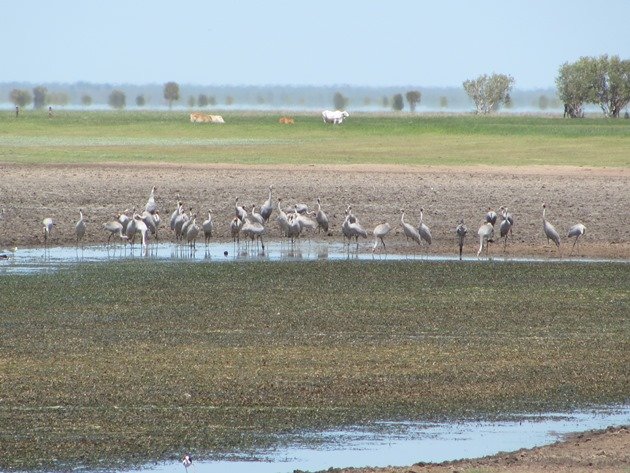
We have just had a few rather wet days and it is just what the land needed. The ideal rain comes from a tropical low, that does not form into a cyclone and just brings much needed rain to the land and does not blow anything over and this is exactly what we have been receiving. The ephemeral lakes around Broome had been drying out fast and the birds were concentrating at these watering points while they patiently waited for the stormy weather to arrive. We can only access these ephemeral lakes when it is dry, because once it rains the land will flood and they will become completely inaccessible by any vehicle. However, the land will be so flooded that we will soon be able to bird the area near Broome called Roebuck Plains from the highway once again. This is the one and only road around Australia and offers excellent birding opportunities from your vehicle without leaving the bitumen.
Before the rains came we did manage to visit a couple of these ephemeral lakes and the water level dropped dramatically over a few days as the temperature hovered around 40c (104f) and above inland. The birds were concentrated around the water bodies and waiting for the onset of rain. Birds arrived that we had not observed for some time and the growth on top of the water offered us great views of a Baillon’s Crake and a Comb-crested Jacana. They obviously know where to go as the weather changes and had found a place that would soon flood and be inaccessible to vehicles.
The Australian Bustards were wandering in to get a drink and getting close to the water to reach down and take a long drink each morning and evening. They are most easily observed early or late in the day near water and then wandering the open plains during the day or resting in the shade. They are one of the larger birds in the Broome area, along with the Brolga in the header photograph. The Brolga were also there to access water and the numbers can increase to several hundred at certain times.
Australian Bustard drinking
Three Black Swans continued to inhabit the drying out lake, despite there being very little water depth left. They were no doubt hoping for rain soon and it has now arrived and they should not be struggling with the water depth as much now as they were a few days ago. Even the Australasian Grebe must have been finding the water rather shallow and the variety of ducks had diminished since the water level had dropped further.
Black Swans, Brolga and Ducks
The mud offered great camouflage to many birds and we noticed a stripe just above a clump of mud, which turned out to be a Swinhoe’s Snipe hiding in a cow’s footprint. We had been stood in the shade of a tree and our attention turned to the tree beside us to observe the Yellow Wagtails and Rufous-throated Honeyeaters. Grant then pointed out that we were being watched by another Swinhoe’s Snipe that was sitting in the shade of the tree. It is almost central in the second photograph and you can only just see its bill on the right of the base of the tree in the undergrowth, but it had a perfect shady spot for a hot and dry day.
Swinhoe’s Snipe hiding in the shade
The mud also offers great camouflage to small birds like the Little Ringed Plover that had eluded us in one direction, but then it was suddenly there and stood out quite easily. My camera does not give it justification, but as you can see the Oriental Pratincole camouflage well on this mud. There is one bird stood behind the Little Ringed Plover on the right.
Little Ringed Plover and Oriental Pratincole
As the day warmed up we had thousands of Oriental Pratincoles swirling in the thermals and then dropping down to drink from what remained of the lake. It is a spectacular sight to watch thousands of Oriental Pratincoles drop from the sky and then soar high once again. The numbers continued to increase as the day got hotter and they are following the swarms of flying ants that come with a tropical storm at this time of year. Grasshoppers will soon be on the menu too and we can expect to see many more large flocks of Oriental Pratincoles over coming months.
A few of the thousands of Oriental Pratincoles present
Oriental Pratincole, Australasian Grebe and Black-winged Stilt
Now the rain has arrived in the Broome area we are going to be doing a lot more birding on foot from the bitumen and looking for any rarities that may get blown in from afar. The recent rain has caused the local sport’s field in town to flood and it now looks like a grassy lake. There have been over one hundred Pacific Golden Plovers present since the rain and they have been joined by over one dozen Common Greenshank and even one Common Redshank and two Ruddy Turnstones. The Common Redshank is not common at all in Broome and not what you expect to find on a sport’s field! On retrieving a decent sized worm the Common Redshank had to run fast to get away from the hungry Silver Gulls that were also present! Ultimately, you need to check everywhere for birds in Broome…including sport’s fields!
The land has gone from a harsh dry environment to a wet and green land and it is a great time of year for birding!


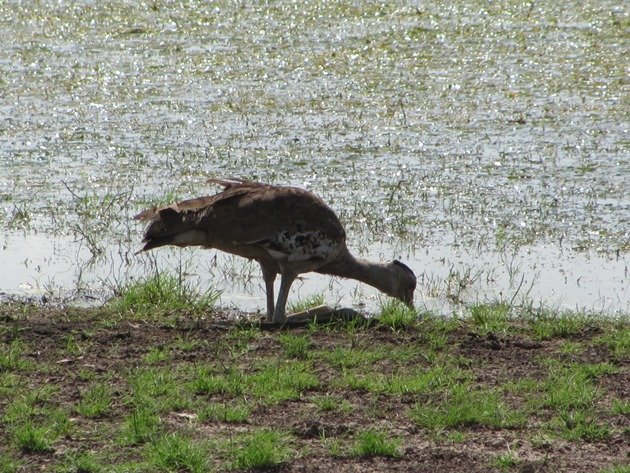
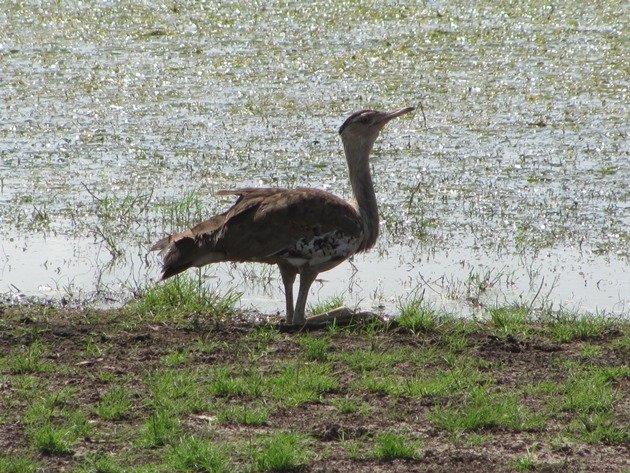
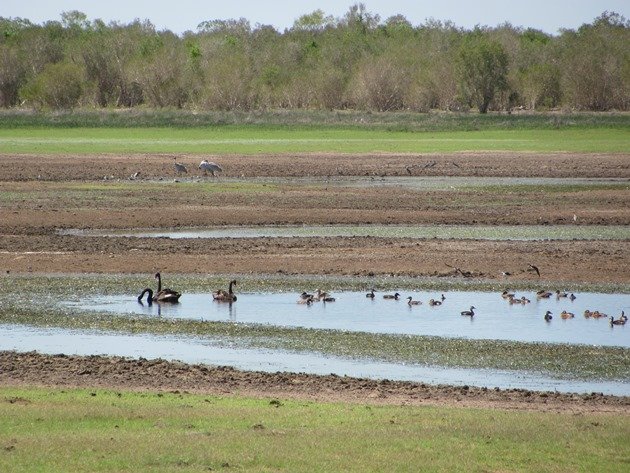
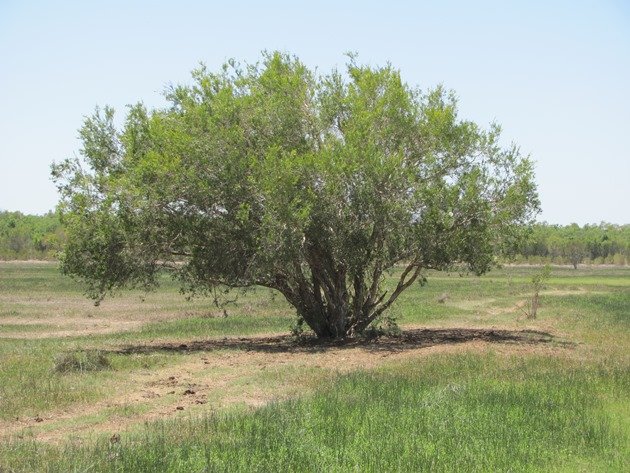
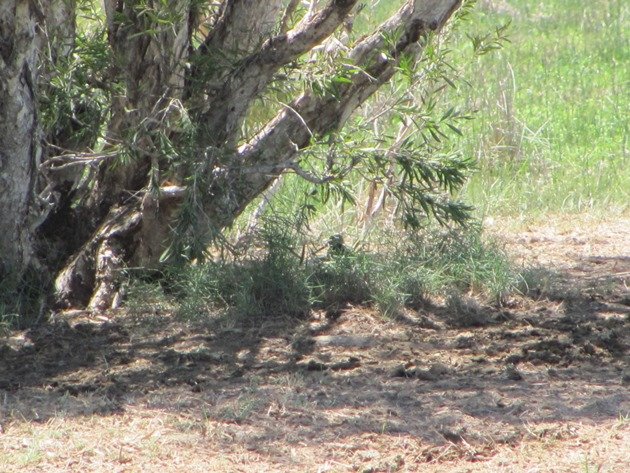
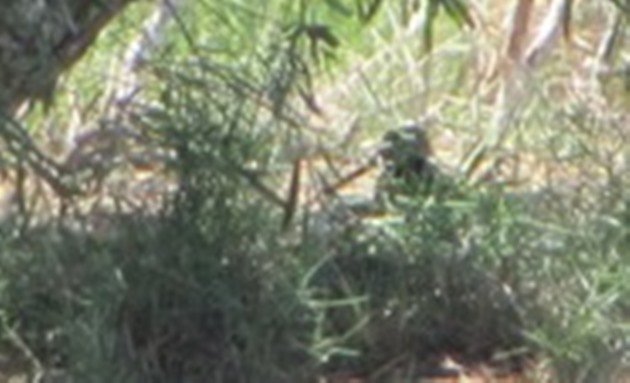
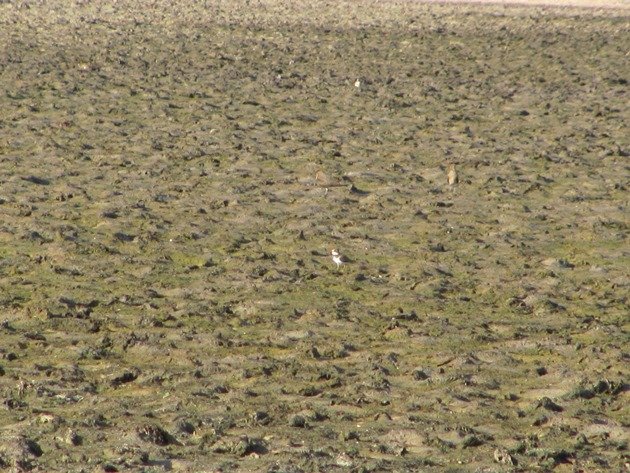
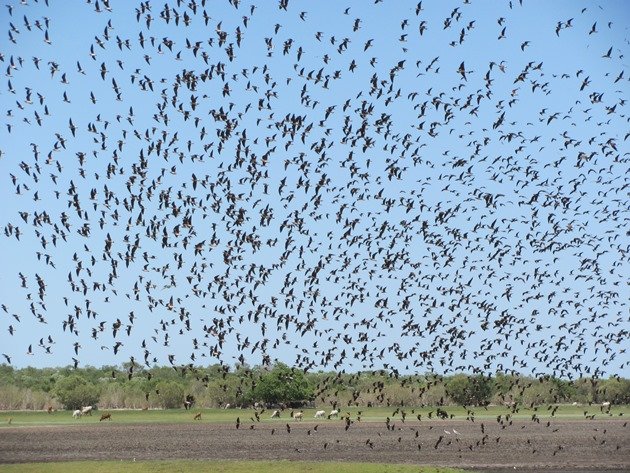
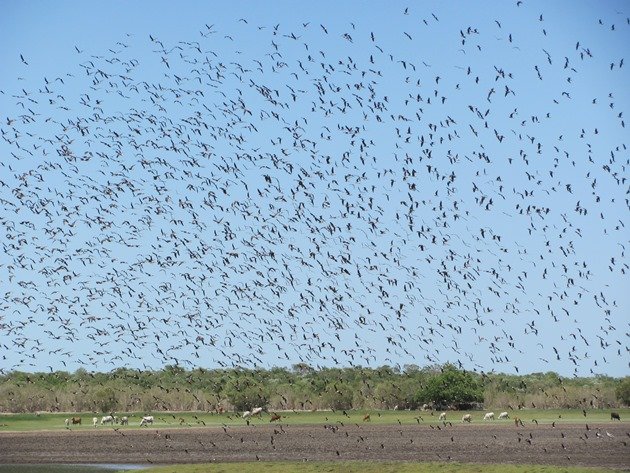
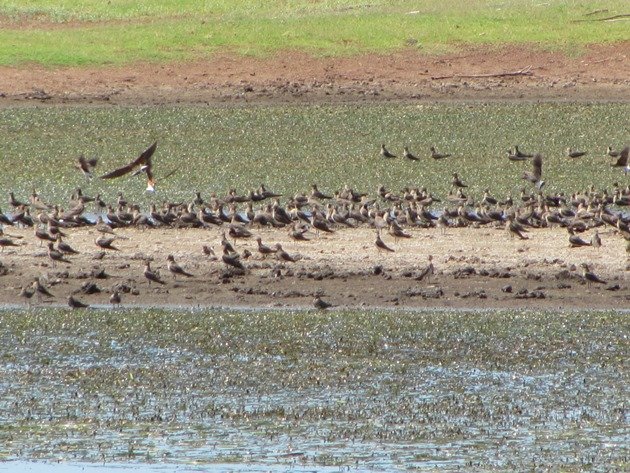
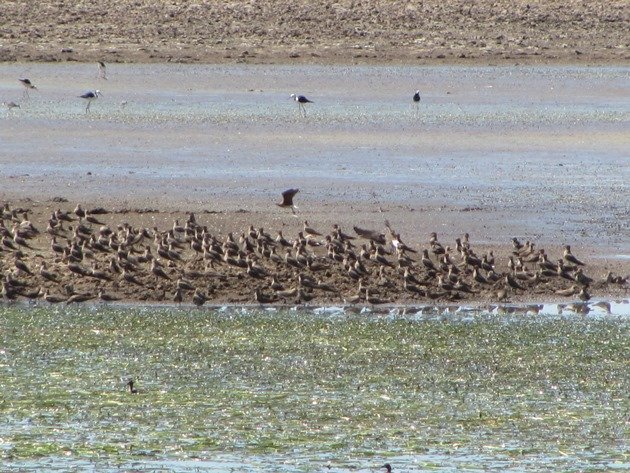











It must be a magic time of year when all this happens without an accompanying cyclone. Even as far south as Melbourne has had some rain from the huge system that possibly was the one you have written about, and inland South Australia and Northern Territory have had some too which is great. Hopefully the birds will get the chance to enjoy it!
Yes, Sonja…it went south and it will be interesting to see what the Banded Stilt do after this rain event. Areas to the north of Broome had over 500mm in a week! The birds are loving it and many have dispersed across a wet green land! 🙂
I looked and I looked and I can’t find that snipe! The photos of the thousands of Oriental Pratincoles are super, it’s as if it was raining pratincoles.
It is sneaky…..the long bill is parallel to the lower branch almost central in the photo and the head and upper body are the dark shape…I hope that helps! 🙂
I have uploaded the same photo cropped to help! 🙂